
or
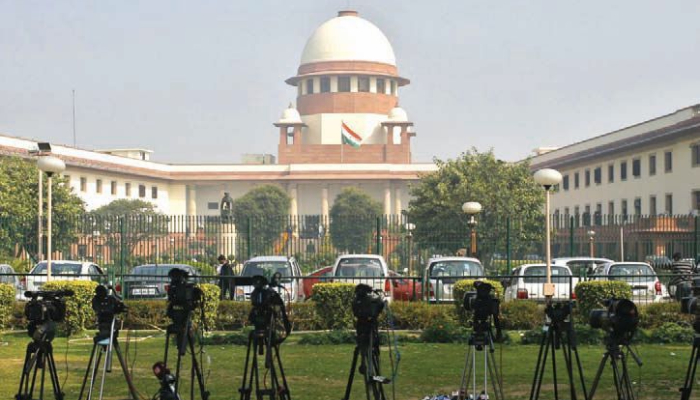
A new year is at our doorstep and we are once again into reflections and looking back at what 2016 has been all about. Lex Witness brings you a dossier of all the cover stories it had in 2016. This activity captures the essence of the last year and recaptures all the major legal and regulatory movements that the country went through last year.
Speaking at the joint conference of the chief ministers and the chief justices in Delhi in April this year, Chief Justice TS Thakur expressed great sadness at the tremendous strain the judiciary in India is under at delivering timely justice to the people of India. Addressing Prime Minister Narendar Modi who was present at the conference, the Chief Justice broke down while blaming the Centre for doing nothing to increase the number of courts and judges in the country. The Chief Justice said, “Centre chose not to lift a finger to help reduce the impossible burden judges carry and aid the cause of justice delivery despite a Law Commission report in 1987 warning that the country is slipping into a crisis where the ratio of the number of judges to the population is grossly inadequate.”
The victims of this ‘burden to judiciary’ are the litigants. Between 25 and 30 million cases are estimated to be pending across Supreme Court, high courts and the subordinate courts. As per the information given by the Supreme Court of India, 62,657 cases were pending in the Supreme Court as on 30.06.2016. In the High courts, there are 38,70,373 cases which are pending as on 31.12.2015 and in the district and subordinate courts of the total pending cases of 2, 70, 19,955 cases, there are 744139 cases which are pending for more than ten years as on 31.12.2015. There are more than a million cases pending for trial under crimes committed against women in all states and union territories of India. According to Access to Justice Survey done by Daksh to find out the impact of this gargantuan backlog on the litigants, it was found that undertrial prisoners are spending more time in prison than the prescribed punishment for their alleged offence. In their study,it was found that about 28 per cent of the accused declared that they had spent more time in jail than the prescribed punishment. Another 34 per cent of individuals accused of bailable offences claimed that they continue to be in jail as they do not have the means to afford the bail or guarantors to stand surety.
The Right to Fair and Speedy trial is guaranteed as fundamental right under Article 21 of the Constitution of India. Any delay in expeditious disposal of a trial infringes the right to life and personal liberty guaranteed under Article 21. In 2009, the Chief Justice of the New Delhi High Court released a report in which he claimed it would take 466 years for the court to clear its backlog. The implications are serious. Due to the backlog, most of India’s prison are filled with detainees awaiting trial. According to National Crime Record Bureau, at the end of 2015, 282 076 undertrials are lodged in various jails constitute about 67.2 pr cent of total prison population. Of these 3, 599 undertrials were detained in jails for 5 years or more and another 11,451 were in jail for three to five years. Our justice delivery system has to provide justice to poor men and undertrials.
According to a Law Commission Report, in all states, there is a significant backlog of cases which requires a massive influx of judicial resources even if one takes a 3 year time frame for clearing backlog. Bihar, for example, requires an additional 1624 judges to clear backlog in three years. According to the Commission, the problem of backlogs is compounded by the fact that in some states, Courts are unable to even keep pace with the new filings, thus adding to the already huge backlog. The ratio of judges per million population in India is the lowest in the world. The Law Commission in its 20th Report found out that India had 10.5 judges per million of population, whereas England has 50.9, Australia has 57.7, Canada has 75.2 and the USA has 107 judges per million of population.
Different Law Commission reports have dealt with the reasons of the pendency and the arrears, and has given suggestions to ease the burden to judiciary. The causes for delay, as per Law Commission, are numerous, such as loopholes in the law itself, inefficient police investigation methods, redundant and voluminous paperwork, lack of infrastructure etc. According to the government, some of the main factors responsible for pendency of cases in courts are increasing number of state and central legislations, accumulation of first appeals, continuation of ordinary civil jurisdiction in some of the High Courts, vacancies of Judges, appeals against orders of quasi-judicial forums going to High Courts, number of revisions appeals, frequent adjournments, indiscriminate use of writ jurisdiction, lack of adequate arrangement to monitor, track and bunch cases for hearing.Both in civil and criminal law, the respective procedural codes allow for tactics of delay. According to a study, there is a cadre of delay-lawyers who proudly specialize in prolonging cases within the court system. The Adjournments in Indian courts are normal routine in criminal cases. It has been reported in the media that the litigants consider adjournments as the major reason for delay. The prosecutors in India manipulate the procedures in law to keep the case linger for years. Also, a large number of frivolous appeals are filed by the state against orders or judgment acquittals without proper scrutiny on behalf of the state. We have faith that our citizens will get justice from the courts with fair and speedy trail, a part of our fundamental right . Therefore, justice delivery must be prompt, fair, impartial, lest the people should lose faith in our justice delivery system.

India opened its economy in 1993 and charted for itself a path of free market economy where market determined the choice of investments. It was clear to those at the vanguard of such change that there was going to be an undersupply of investment on education, health, cleanliness, environment, etc. The corporate spending for such social cause, for the public good, was really a cause for concern for the policy makers. Therefore, when India passed a new Company Act in 2012, it made Corporate Social Responsibility mandatory for the companies to undertake. The Ministry of Corporate Affairs later notified Section 135 and Schedule VII of the Companies Act as well as the provisions of the Companies (Corporate Social Responsibility Policy) Rules, 2014 (CRS Rules) with effect from 1 April 2014. The Ministry framed rules and guidelines for the corporates so that they could don the thinking hat of a responsible businessman and give back to society from where they earn their riches.
Section 135 of the Companies Act provides the threshold limit for applicability of the CSR to a Company i.e. net worth of the company to be ` 500 crore or more or turnover of the company to be ` 1000 crore or more or net profit of the company to be ` 5 crore or more. Companies that trigger any of the aforesaid conditions must spend at least two per cent (2%) of their average net profits made during the three immediately preceding financial years on CSR activities and/or report the reason for spending or non-expenditure. Further as per the CSR Rules, the provisions of CSR are not only applicable to Indian companies, but also applicable to branch and project offices of a foreign company in India.
According to the Act, every qualifying company will be required to constitute a CSR Committee (“Committee”) of the Board of Directors (“Board”) consisting of three or more directors. The Committee shall formulate and recommend to the Board, a CSR policy which shall indicate the activities to be undertaken; recommend the amount of expenditure to be incurred on the activities referred and monitor the CSR policy of the company. The Board shall take into account the recommendations made by the CSR Committee and approve the CSR policy of the company.
In the first year of legislation, Rs 6,490 crore was the total outlay to be spent towards CSR, against which INR5,115 crore (79 per cent) was spent towards CSR. Being the first year of implementation, this is being looked at as a good scenario. However, more than half of the 460 firms that filed their annual reports on CSR as of January 31, 2016, failed to spend the prescribed amount for 2014-15. ONGC, NTPC, TCS and Bharti Airtel are some of the big companies that failed to meet their social obligation. While Monsanto India did not spend any money out of its prescribed ` 1.8 crore, Indian arms of large multinationals such as Apple India, Pfizer and Nestle India also failed to spend even half the prescribed fund.
However, according to a latest report on CSR spending by the India Inc, while in 2014-15 there were three companies that had not spent any single penny from the prescribed CSR budget, in 2015-16 all companies have spent certain amount from the CSR budget. The report suggests that companies have become more serious about the CSR and they are endeavoring to match the prescribed CSR requirements with the actual CSR spend. The fact that 58% of the companies spent exactly as prescribed or more than the prescribed, shows the eagerness of India Inc to take up CSR seriously in order to give back to society.

RELIGIOUS FREEDOM & ARTICLE 44
The Uniform Civil Code has been at the centre of debate for a long time, perhaps since the time the Constitution was framed and it was envisaged by the makers of the constitution of India as being the ideals to be achieved as the Sate Principle of Directive Policy, clearly demarcating it from the fundamental rights. Today, the debate has gained some momentum as the NDA led by the BJP has asked the Law Commission to examine the issue of implementing the controversial Uniform Civil Code in detail and submit a report.
But the Muslim religious and political figures have reacted strongly to this development and they have said that any move to interfere in Muslim personal laws would be fraught with unwarranted consequences. According to a newspaper report, they have been reported as saying: “When there are so many differences in cultures across the country, how will they impose Uniform Civil Code? Those who are enemies of the country will impose a Uniform Civil Code. Nobody can interfere in the religion and religious practices of any person. This is a secular country. What is a secular state? And why is secularism being tarnished?”
Muslims consider talks about changing their personal laws a direct attack on their religious identity since to a large extent personal law is determined by the religion. A uniform civil code if came into force will prohibit different legal rights such as the right to marry more than once. Dr. B.R. Ambedkar had cautioned the Constituent Assembly against imposition of a uniform civil code on any unwilling community.
The Law Commission in its 212 report, under the chairmanship of Hon’ble Dr. Justice AR. Lakshmanan , examining laws of conflicts in civil marriages in India, had said, while proposing changes in Special marriage act and foreign marriage act, that they were mighty steps towards translating into action the ideal of uniformity in civil laws envisaged by Article 44 of the Constitution of India.
However, in Santosh Kumar v Sec, Ministry of Human Resources Development, the SC said that state tolerance of religion does not make it either a religious or a theocratic state. In SR Bommai v Union of India the court held secularism as a basic feature of the Constitution and any state that act against that ideal can be dismissed by the president.
Uniform Civil Code means unifying all personal laws to have one set of laws dealing with the aspects of marriages, property, etc., that will apply to all citizens of India irrespective of the religion. There are different personal laws for Hindus and Muslims which cover property, marriage and divorce, nheritance and succession.Therefore, this legislative exercise would tantamount to flirting with the religious freedom guaranteed by Article 25 of the Constitution of India. The imposition of a Common Civil Code would be considered as an invasion on personal laws of citizen when personal law has its roots in religion and religious practices. This might have unwarranted consequences.
In October 2015, last year, the Supreme Court decided to register a PIL suo motu titled ‘Muslim women’s quest for equality,’ on the gender discrimination women face under the Muslim personal law. “This is a very important issue. It affects a very large section of the population,” Hon’ble Chief Justice of India T.S. hakur observed while agreeing to hear all stakeholders equally in the matter.But it is interesting to note that those Muslim women who are fighting against triple talaq have categorically said that they do not want uniform civil code, they only want codification of Muslim personal with safeguards and changes which is non discriminatory as the triple talaq.
Muslim legal experts have also long argued that the case of triple talaq is the one about the reformation of Islamic shariah law, not a pretext to bring the Uniform Civil Code. Given the subtext of the debate on the Uniform Civil Code and the previous posture of the government, there is a palpable fear among the Muslim. They believe that ‘if, in the name of uniformity, a Uniform Civil Code imposes the norms of the majority on all minorities, this would clearly not advance religious freedom.’ The Muslim Personal Llaw Board in the petition to the Apex Court has argued that the framers of the Constitution were fully conscious of the difficulties in enforcing a Uniform Civil Code and thus they deliberately refrained from interfering with the provisions of the personal laws and laid down only a directive principle.
They have also said that the rights of Muslim Women are already protected by virtue of Muslim Women (Protection of Rights on Divorce) Act, 1986, whose constitutional validity has been upheld by the Supreme Court.
Therefore, the exercise of codification would tantamount to poking into religious freedom guaranteed by Article 25 of the Constitution of India. The present Law Commission has sought public views on the subject to revise and reform family laws, saying the aim is to address social injustice rather than plurality of laws. In an appeal issued on the October 7 2016, the Commission said the objective behind the endeavour is to address discrimination against vulnerable groups and harmonise the various cultural practices even as it assured the people that the “norms of no one class, group or community will dominate the tone and tenor of family law reforms”.

The passage of the 122nd Constitutional Amendment Bill in the both Houses of Parliament dawns the arrival of a new dispensation of indirect taxation in India. It is supposed to usher in changes that will impact all aspects of India’s business and accelerate India’s economic progress. It is the single biggest reform since independence which is going to change India’s indirect taxation for good. The introduction of Goods and Services Tax (GST) is an important landmark in the fiscal history of India.
Since 2003, when the Kelkar Task Force on indirect tax had suggested a comprehensive Goods and Services Tax (GST) based on VAT principle to its first introduction in the Lok Sabha in 2011 and to its final passage in the both Houses of Parliament this month, it has been a long journey for the GST.
According to India’s Task Force on Direct and Indirect Taxes, a good tax system besides being simple minimize distortion and bring efficiency and equity. It should also not become a source of distortion in the market. The GST looks to be scoring high on being a forward looking, more equitable and simple taxation, but the challenge for making this an efficient tax system remains a daunting task.
Taxation is a Constitution matter. It provides for the division of taxation power between the centre and the state. As per the Constitution of India, states have the power to levy taxes on sale of goods and the Centre has the power to levy taxes on services and manufacture of goods. In order to bring about the GST, the amendment of the Constitution was required to give concurrent powers to Parliament and State legislatures to levy taxes on sale and manufacture of goods and on the services.
The 122nd amendment to constitution now confers simultaneous power upon Parliament and the State Legislatures to make laws governing goods and services tax. Under GST regime, taxes would be levied by both state and the central governments on supply of goods and services.
There will be two components of GST: Central GST (CGST) and State GST (SGST). Both Centre and States will simultaneously levy GST across the value chain. Tax will be levied on every supply of goods and services. Centre would levy and collect Central Goods and Services Tax (CGST), and States would levy and collect the State Goods and Services Tax (SGST) on all transactions within a State.
The Central GST and the State GST would be levied simultaneously on every transaction of supply of goods and services except on exempted goods and services, goods which are outside the purview of GST and the transactions which are below the prescribed threshold limits. Further, both would be levied on the same price or value unlike State VAT which is levied on the value of the goods inclusive of Central Excise.
There are several challenges for the government before it introduces the GST in April 2017. The government is still to get the ratification of GST at least by half the sates of India and notify GST Rules and exemptions, and finalise the structure of GST rate. The rate of GST is the point of debate and there are some figures doing the rounds such as standard rate of 18% for most of the items, 40% for luxury goods and 12% for merit goods. The GST Council has to finalise the rate before the roll out in April next year.
GST is going to impact the economy in a big way. According to business analysts, after an initial, transitory increase in inflation, there will be growth. In the long term, lower tax and logistic costs, productivity gains and higher investments under the GST will reduce inflation. According to Morgan Stanley, the overall impact of better allocation of resources, improving efficiency of domestic production and exports is likely to improve overall growth. As per estimates from the National Council of Applied Economic Research (NCAER), growth could increase by 0.9% to 1.7%. The biggest beneficiary of the GST will be automobile sector. Currently, the two-wheelers, small cars, commercial vehicles witness tax outgo of 27%. With the introduction of GST, if a standard of 18% would be levied, it will result in a 9% reduction which might result in reducing price and inducing demand. Besides automobiles, all consumer companies like HUL, Colgate, Brittania will stand to gain with respect to supply chain and logistics. Large car makers will see their gain by 5% as their total outgo at present is 45% and they will be charged under GST at the rate of 40%. They will also benefit from saving on logistics and warehousing.
However, there are concerns of some sates strong in manufacturing, like Tamil Nadu, about their economy being impacted negatively because of GST. Since the GST is a destination-based tax, there will be outflow of revenue to the other states which will consume goods. But the fact is the GST has a provision to compensate such states for the revenue loss for five years. Tamil Nadu for this reason is opposed to the GST has so far not ratified the bill. The economists believe that once implemented in earnest, the GST will enhance operational efficiency, ease procedural compliance, and increase the overall tax payer base, besides leading to the reduction in the overall effective tax rate burden on the consumer. Quite a recipe for a robust growth of the economy!
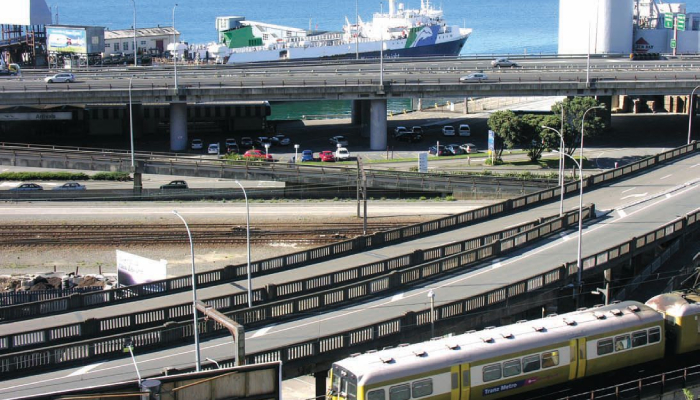
Infrastructure development is now the key to success of India. If India does not invest in infrastructure now, the benefits of opening up which started in 1992 will be lost. Infrastructure sector is now a key driver for the economy. But on its own, India cannot develop infrastructure at a scale and pace required for its proper and timely development. India has to rely on private investment in infrastructure. Therefore, the next big reforms are required in attracting investments in infrastructure development in India.
Since the economy has liberalized, the need and scope for investment in infrastructure sector has increased. According to a latest report released by an Industry association, India needs ` 31 trillion to spend on infrastructure development over the next five years, with 70 per cent of funds needed for power, roads and urban infrastructure segments. The Indian power sector itself need an investment of US$ 250 billion in the next 45 years in power generation, distribution, transmission and equipment. The Indian construction equipment industry is expected to grow to US$ 5 billion by 2019-20 from current size of US$ 2.8 billion.
India in recent years has announced many measures to boost foreign capital in India. In the consecutive budgets the measures have been announced to attract foreign investments in India. India has tried to bring ease in doing business by bringing streamlining regulatory structures and investor friendly measures. It has also announced steps to re-vitalise PPPs. India is now more committed towards a more predictable tax regime to further boost investor confidence and enhance FDI inflows. India has shown a renewed focus on funding infrastructure investment — even at the expense of fiscal consolidation.
Further, the government’s commitment to introducing GST should simplify taxation and has the potential of making Indian manufacturing more competitive. The recent efforts at reducing custom duties on many items and introducing a tax regime that is internationally competitive on rates are also going to bring in more investments.
Finance Minister Arun Jaitley went on a six-day tour to Japan, in May this year, to woo Japanese investor. He promised more structural and market-oriented reforms and stepping up infrastructure spending to accelerate economic growth beyond the current 7.6 per cent. The Finance Minister said, “The direction that I have indicated is of more structural reforms, more marketoriented reforms and the future direction of stepping up infrastructure spending, concentrating on rural areas and social security, I think this direction will consistently be maintained. While opening out to both international and domestic investments, we removed the unnecessary conditionalities, we eased the process of doing business in India. It is far easier than what it was years ago.”
The government in December 2015 set up the ` 40,000 crore National Investment and Infrastructure Fund (NIIF). While the government holding in the fund is 49%, the remaining would be held by private investors. It is an investment vehicle for funding commercially viable greenfield, brownfield and stalled projects. Pitching for investment in National Investment Infrastructure Fund (NIIF), Finance Minister Jaitley met global investors while he was on his tour to Japan and promised them an “advantageous” tax regime in the country.
The Reserve Bank of India (RBI) notified 100 per cent foreign direct investment (FDI) under automatic route in the construction development sector. The new limit came into effect from December 2014. The government relaxed rules for FDI in the construction sector by reducing minimum built-up area as well as capital requirement. It has also liberalised the exit norms. The capital outlays for roads and railways have been increased considerably.
The RBI has allowed companies in the infrastructure sector to raise External Commercial Borrowings (ECB) with a minimum maturity of five years and with an individual limit of US$ 750 million for borrowing under the automatic route. The Securities and Exchange Board of India (SEBI) has allowed Foreign Portfolio Investors (FPI) to invest in units of real estate investment trusts (REITs), infrastructure investment trusts (InvITs), category III alternative investment funds (AIFs), and also permitted them to acquire corporate bonds under default.
Mr Nitin Gadkari, Union Minister of Road Transport & Highways and Shipping, has launched various online platforms such as ePACE (project appraisals portal), INFRACON (portal for infrastructure consultancy firms and personnel) and INAM PRO (web-based application for infrastructure and material providers).
India has announce a new aviation policy in 2016 which is aimed at the development of green-field airports and heliports. India has also announce measures for investment in highways and shipping sector announcing several incentives such as declaring the road sector as an industry, providing 100 per cent tax exemptions, duty free imports of certain identified equipment for construction plants, etc. In the rail sector, the railway ministry has earmarked an investment of USD133.5 billion toward development of the railways sector ending 2019. It has also announced world’s largest PPP project in the railways and has promised to review the overall PPP policy to make changes in it in order to make the infrastructure sector investor friendly and easier to administer.

India is the largest supplier of medicine to the US. But Indian drug companies have been having issues with Food and Drug administration (FDA) of the US. In February this year, the US drug and food regulator, issued ‘Form 483 observations’ on deviations from good manufacturing practices to Indian pharma major Glenmark. The US regulator inspected Glenmark’s Indore plant in Madhya Pradesh and reported three major objections. But the Indian drug company responded to their objections and addressed the concerns raised by FDA, and subsequently received product approvals for export from this plant.
But it is not just Glenmark, in fact, many companies such as Wockhardt, Sun Pharma, Lupin, Ipca are currently facing problems with the US FDA, and all of them are not as fortunate as Glenmark to get the clearance from US FDA for the supply of medicines. According to an Indian industry chamber report, the annual growth rate in pharmaceutical exports may almost halve to 7.98 % by 2020 from 14.77% CAGR during 2010-2014.
The importance of an effective regulation in the drug business cannot be doubted because compromise can lead to serious consequences. The FDA, the primary regulator of medical products in the US, requires every new drug, including generic drugs, to be safe and effective. While the FDA does not develop, manufacture or test drugs, it requires evidence of a new drug’s safety and effectiveness, demonstrated through non-clinical trials and clinical trials of the drug on human volunteers, before it will approve a drug for marketing.
The FDA has statutory authority to ensure product safety, effectiveness and compliance with current good manufacturing practices (CGMPs). It has the power to:
The FDA requires generic drugs, to be safe and effective. The US adopted HatchWaxman Act, formally known as the Drug Price Competition and Patent Term Restoration Act of 1984, which expedites and streamlines both generic drug approvals and patent litigation involving generic drugs. Before Hatch-Waxman Act, no streamlined FDA approval process existed for generic drugs. Rather, generic drug companies were required to conduct the same kinds of expensive, time consuming clinical trials that drug companies conducted for new brand-name drugs. In addition, the unlicensed investigation and testing of a patented drug by the generic drug company to obtain FDA approval for a generic version could subject the generic drug company to patent infringement liability. The Hatch-Waxman Act changed this and created an abbreviated process to allow generic drug companies to obtain FDA approval of generic drugs. Because of this, today it is far easier for generic drug companies to demonstrate the safety and efficacy of their generic drugs.
If a company fails to comply with CGMPs or biologic manufacturing guidelines, the FDA can:
According to industry sources, since 2010, the FDA has issued warning letters to an increasing number of companies for lack of compliance. From 2010 to 2012, only five drug manufacturers were cited for violations. But between 2013 and 2015, the number increased to 24. During this time period, the three most common issues cited were a lack of controls to prevent alterations of data by staff, a failure to maintain records of accurate data, and delayed reporting of data.
According to a report, of the 29 warning letters sent to drug manufacturers for data integrity problems, 18 were to companies with facilities based in India and six in China. US-based facilities saw just one violation despite receiving 68.8% of all FDA global drug quality inspections between 2010 and 2015. Natco Pharma has received Form 483 notifications from the US FDA, after the FDA conducted inspections earlier this year at the company’s active pharmaceutical ingredients manufacturing facility at Manali, near Chennai, and the pharmaceutical formulations facility at Kothur, near Hyderabad.
As a consequence of FDA tightening noose around the drug companies for violation of best practices, the pharma industry is at present in turmoil. However, the companies that are currently facing problems because of FDA warning letters and notices, are trying to address the problem. The companies such as Wockhardt, Sun Pharma, Lupin and Ipca have come together to form a quality forum and are consulting global experts, including both MHRA/EDQM and US FDA, to tackle the issue.
According to DG Shah, Secretary General of Indian Pharmaceutical Alliance, which he said in April this year to a newspaper, “We believe that together (FDA and India) we should be able to resolve because FDA is not interested in discontinuing the supply. It hurts the US citizens, because nobody can match the prices that India offers. I do not see that as a problem but it has cropped up and the way FDA is inspecting now is different from how it was being done 12 or 18 months ago. So, we need to take all that into account and work not only on what is now, but we should anticipate what would be the future trend in this and address all those issues and that is what we have started doing.”
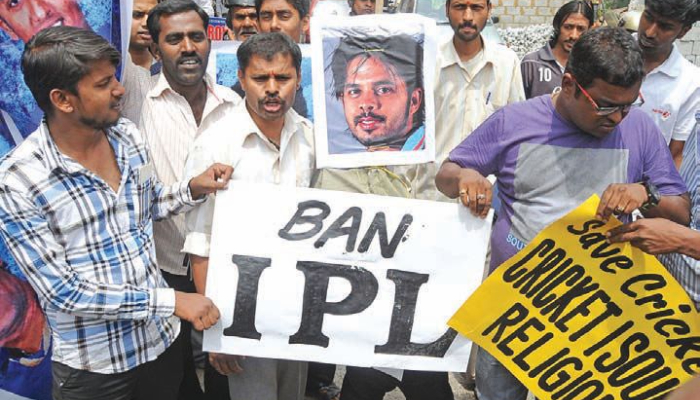
In a shocking incident this month, a man in Kanpur put his wife at stake in an Indian Premiere League (IPL) betting game and lost her. According to newspaper reports, the matter came to light after some men started harassing the punter’s wife, who finally lodged a complaint with the police with the help of social activists.
In Delhi, on May 12, a man hanged himself in a tree not far from the Parliament complex after losing crores in cricket betting. A resident of Madhya Pradesh’s Shivpuri district, the man left a 23-page suicide note which mentioned that he had taken loans from various people to place bets on cricket matches, but he lost all the money, including his life’s savings, and he had no option but to end his life. The news was covered by all major dailies in India.
Betting in sports is illegal in India. It is punishable by law. But betting has been going on in India despite anti-betting laws. In fact, India was in news for betting in cricket on a large scale. Who would forget Hansie Cronje whose recorded conversation with Sanjay Chawla, a representative of Indian betting syndicate, was revealed by the Delhi Police in 1999? Cronje confessed to King Commission in South Africa to have been involved in betting. He was banned for life from playing cricket. His confessions brought the betting in cricket in the limelight and led to unearthing of the biggest scandal of match fixing and betting in India.
In April 2013, Delhi Police, under Sections 420 and 120 B of the IPC arrested S. Sreesanth, Ajit Chandila and Ankit Chavan of the franchisee Rajasthan Royals along with 7 bookies for allegations of spotfixing. Shortly thereafter Gurunathan Meiyappan, son-in-law of N.Srinivasan, BCCI President and owner of franchisee Chennai Super Kings was also arrested by the Mumbai Police on 25th May, 2013. The three players in this fixing and betting were allegedly promised money ranging from US$36,000 to 109,000 for each over.
Cricket has become a multibillion dollar industry now. The corporatization of sports was witnessed at the start of Indian Premiere League in 2007. The ‘Karry Packers of India’ started a franchisee system of cricket with high stakes. The players were chosen on the basis of auction. The bets became high on the game as the money spent on players was high. IPL became a hotbed of controversy. The man responsible to have brought IPL Sushil Modi was found neck deep in controversial dealings.
The Delhi Police estimates that in one IPL match the total bets would be around Rs. 150 crores. Article 2.2.2 of the BCCI Code defines betting as placing, accepting, laying or otherwise entering into any bet with any other party in relation to the result, progress, conduct or any other aspect of any other match or event.
According to the BCCI Code, betting is one of the actionable wrongs. In terms of Article 2.5.2, the participant who authorises, causes, knowingly assists, encourages, aids, abets, covers up or is otherwise complicit in any act or omission of the types described in Articles 2.1. to 2.4 committed by his/her coach, trainer, manager, agent, family member, guest or other associate shall be treated as having committed such an act or omission himself and shall be liable accordingly under the Anti-Corruption Code.
After the IPL spot-fixing and betting scandal, the Apex Court set up Justice Mukul Mudgal Panel to look into the charges of the scandal. The committee made a number of recommendations to cleanse the cricket of betting, match fixing and mismanagement. The Mudgal Committee also recommended a separate law, investigating agency and courts to deal with betting and match-fixing charges and that the law must be stringent like anti- terror and anti-drug laws. It said that post-match parties where undesirable elements have free access to players should be banned and the list of such elements maintained by BCCI should be circulated among players. Senior players with unimpeachable record like Sachin Tendulkar, Rahul Dravid, Anil Kumble, and so on should caution and advise the younger players against pitfalls of indulging in malpractices like betting and match fixing/spot fixing.
The SC in its judgement Cricket Association of Bihar Vs BCCI constituted Justice Lodha Panel to decide the quantum of punishment to Gurunath Meriyappan, Raj kundra and their franchisee CSK and Rajasthan Royals and to find out what steps must be taken to reforms BCCI and what changes it requires in its rules and regulations. The Committee made a number recommendation to reform the BCCI and cleanse the system and make cricket betting free. The Panel wanted the BCCI to come under RTI Act. It recommended a new legalisation of betting and proposed one person one post and no proxy voting of individuals. The panel recommended separate governing bodies for the IPL and BCCI. The Panel also recommended legalising of betting, banning of advertisements in between overs during cricket telecast and age-limit for BCCI office-bearers.
However, the BCCI said the recommendations of the Lodha Panet were un-implementable and filed an affidavit in the Supreme Court. However, while hearing BCCI’s affidavit, the Supreme Court came down heavily on the Board of Control for Cricket in India (BCCI), saying that its mandate was to promote cricket in the country but it had done nothing to develop it. The Apex Court said: ‘Cricket being more than just a sport for millions in this part of the world, accusations of malpractices and conflict of interests against those who not only hold positions of influence in the BCCI but also own franchises and teams competing in the IPL format have left many a cricketing enthusiasts and followers of the game worried and deeply suspicious about what goes on in the name of the game. And cricket being not only a passion but a great unifying force in this country, a zero tolerance approach towards any wrongdoing alone can satisfy the cry for cleansing.’
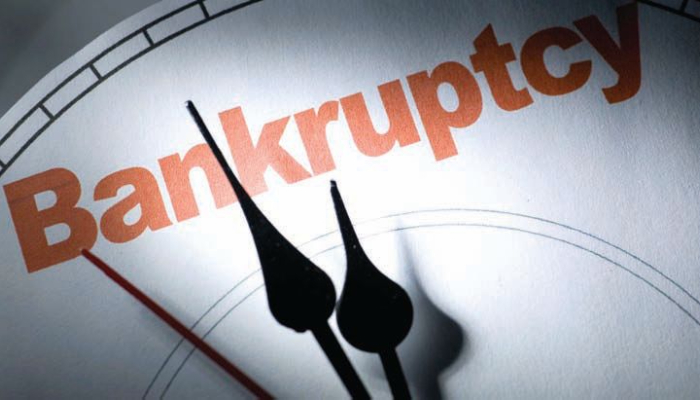
India is growing fast. It is one of the fastest growing economies of the world. However, if this growth is to be sustained, Indian banks and India’s insolvency and bankruptcy regime have to reinvent themselves as maintaining their key promises and functions. Indian Banks have been at the receiving end of the system which allows piling of non performing assets. The banks in India have $121 billion troubled debt pile, over $100 billion of which is on the books of public sector banks. According to RBI data, stressed assets rose to 14.5% of the banking sector loans at the end of December 2015. The banks have written off more than Rs 1,14,000cr of bad loans. The Supreme Court of India has asked the government to overhaul the banking system to prevent bad loans. Companies have floundered public money and there is no effective legal and institutional mechanism to recover them from the defaulting entities.
To curtail this menace of rising NPAs, reforms of all sorts were important. However, what was most urgent was the reform in the insolvency and bankruptcy laws in India. So, the Ministry of Finance in India set up the Bankruptcy Law Reforms Committee (BLRC) in 2014 under the Chairmanship of Mr. T.K. Vishwanathan (former Secretary General, Lok Sabha and former Union Law Secretary) with the mandate to recommend an Indian Bankruptcy Code, applicable to all nonfinancial corporations and individuals that would replace the existing framework. The committee submitted its report and the draft Insolvency and Bankruptcy Code to the government in November 2015.
The present Legal and procedural framework relating to Insolvency is laid out by the following legislation
India has taken a giant leap in adopting a new bankruptcy law after the Lok Sabha passed the Bill called Insolvency and Bankruptcy Code, 2015. The bill was aimed at expeditious resolution of insolvency, promotion of fruitful investments, releasing resources of the banking sector locked up in unproductive segments, improving the viability of the credit markets and generally easing the business controls in India. The Bill amended the Companies Act, among the many other pieces of legislation, to become the overarching legislation to deal with corporate insolvency.
The Code creates time-bound processes for insolvency resolution of companies and individuals. It sets up a time limit of 180 days during which corporate insolvency will have to be resolved. However, if within 180 days, 75% of creditors do not agree on the revival plan, the firm automatically will go into liquidation. If the three-fourths of the creditors decide that the case is complex and may not be addressed within 180 days, an extension of 90 days can be provided.
The resolution processes will be conducted by licensed insolvency professionals (IPs). These IPs will be members of insolvency professional agencies (IPAs). IPAs will also furnish performance bonds equal to the assets of a company under insolvency resolution.
Information utilities (IUs) will be established to collect, collate and disseminate financial information to facilitate insolvency resolution. The National Company Law Tribunal (NCLT) will adjudicate insolvency resolution for companies. The Debt Recovery Tribunal (DRT) will adjudicate insolvency resolution for individuals.
The Insolvency and Bankruptcy Board of India will be set up to regulate functioning of IPs, IPAs and IUs. The Code also sets up a fund called the Insolvency and Bankruptcy Fund of India.
As for the distribution of proceeds after the liquidation, firstly, insolvency resolution process cost and liquidation costs are to be paid in full. It will be followed by the debts owed to secured creditors, then the workmen’s dues for 12 months, followed by unpaid dues to employees other than workmen, and financial dues owed to unsecured creditors. Government taxes for two years, other debts, preference shareholders and equity shareholders will receive last priority for payment. The Code also provides for monetary penalty and jail term of up to five years for concealment of property, defrauding creditors and furnishing false information.
The new legislation is a step in the right direction. With the new legislation, it will be possible for the company to go for early solvency resolution process. The strict time line is another major step in the right direction. The bill gives rise to the introduction of insolvency professionals who will conduct the insolvency resolution process, take overthe management of a company, assist incollection of relevant information and manage the liquidation process.
However, the experts have raised concerns as to the role of the government which will be more direct after this bill gets the assent of the President. They point out that government has to stay outside and supervise. The constitution of Insolvency and bankruptcy Board which will have the power to appoint, license insolvency professional and hold disciplinary proceedings against them is fraught with unwanted consequences. They recommend doing away with the board altogether and letting the new breed of solvency professionals self regulate themselves. Another objection is regarding vesting jurisdiction with DRT for personal insolvency. Experts have pointed out that it will make law inaccessible. DRT at present has huge backlog of cases and many tribunals are not functioning at present. As for National Company Law Tribunal, which will handle cases of corporate insolvency, it has still not been constituted. So, there is a need to constitute without any delay not just the NCLT but also other new institutions proposed to be constituted by the Code. So, clearly, the implementation will now be the key factor going forward. But, the Code on the whole is a timely legislation that will expedite resolution of insolvency and make the process of debt recovery easy for creditors.
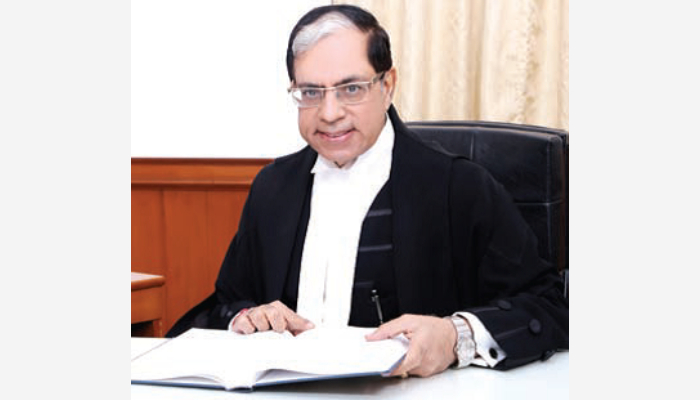
As you know Sir, a new Insolvency and Bankruptcy Code, 2016 has finally come after receiving the assent of the President. What, in your opinion, is the significance of legislating this Code?
It is a matter of satisfaction that after long wait Insolvency and Bankruptcy Code has seen the light of the day and is now on our statute book. Some of our commercial statutes had become virtually obsolete in the present scenario ever since India adopted economic policy based on globalisation and liberlisation. With globalisation, the world is shrinking and is becoming one global village in economic sense, which hardly recognises political boundaries and permits free flow of international trade and commerce across borders. It necessarily necessitates convergence of commercial and economic laws. That was precisely the reason for amendment in so many statutes to bring it in tune with international standards demanding uniform approach. In the year 1996, Arbitration and Conciliation Act was passed replacing the Arbitration Act of 1940. It was based on UNCITRAL suggested model. We made sweeping amendments in intellectual property laws as well, i.e. Copyright Act, Patents Act and insofar as Trade Marks Act is concerned, it was completely replaced by the old Act.
In the year 2002, lots of amendments were made in the Companies Act as well, but before these could be implemented, a new wisdom dawned to replace the old Companies Act by completely new enactment. It took almost 11 years in bringing out the new Companies Act, which was passed in the year 2013. However, even after deliberations over a long period in bringing about the Companies Act, it lacked proper insolvency regime. Fortunately this realization came soon after passing of Companies Act, 2013. In this backdrop, legislating a complete law on insolvency and bankruptcy is a welcome step.
I have already said that now we have a comprehensive law on insolvency and bankruptcy which not only covers corporate entities but natural persons in India as well. It is the most impressive feature of this Statute. Though there may be a debate as to whether individual insolvency should have been covered by this very Code, eschewing that debate, insofar as insolvency and bankruptcy of corporate entities is concerned, this law is enacted, again keeping in view the international scenario with convergence in mind. In fact, in order to have uniform economic and commercial laws, UNCITRAL, which is a United Nations body, has been coming out with model laws and legislative guides. To put it in nutshell, following features of the Act have impressed me:
The new Act, apart from many other things, envisages setting up new institutions. Some concerns have been raised about vesting total control with the proposed Bankruptcy Board. There are also concerns that vesting Debts Recovery Tribunal (DRT) with personal insolvency will lead to delays as there are huge back logs and many Tribunals are nonfunctioning at present. Tell us, Sir, how do you look at these proposed new institutions and the concerns raised by the professionals?
You are right about the concerns raised in the aforesaid areas and even some more areas.
In the aforesaid framework, the Board is going to Act as a regulator that shall regulate insolvency professional agencies. The Board is invested with large powers and given wide range of functions that include power to appoint, licence and de-licence insolvency professionals and hold disciplinary proceedings against them. It shall, however, comprise of senior Government functionaries and other members who would be appointed by the Government. The debate centers around as to whether such kind of regulatory powers should have been vested in a Board of such a composition or these functions should have been assigned to an autonomous body, independent of Governmental control.
Some experts feel that there should have been a mechanism of self-regulation through statutory framework that is provided in other statutes. Examples are Bar Council of India, Medical Council of India, Indian Institute of Chartered Accountants, etc. However, of late, there is a criticism in the manner Medical Council of India or even Bar Council of India have functioned. Therefore, only time would prove as to whether constitution of such a Board is a better proposition.
Insofar as giving adjudicatory function to DRT with respect to personal insolvency is concerned, I am of the view that this may not be a wise step. Normally, these DRTs are presided over by judicial officers who are of the level of District Judges. They may not be very well equipped with the nuances of insolvency laws. At the same time, they also have huge pendency of other cases. May be, this compromise is done to avoid creation of another tribunal. There is one more aspect which is not addressed in this Code, viz.: issues pertaining to cross-border insolvencies. However, that involves a long debate and, therefore, I am not discussing this aspect in detail on this occasion. But I would say this much that provisions for cross border insolvencies are necessary and an attempt should be made to include them, keeping in view UNCITRAL guidelines. Though, at the same time those guidelines can be suitably tweaked to take care of national interest as well.
The Code provides for the creation of insolvency professional that will have a central role to perform in the insolvency process. What, in your opinion, Sir, will make the best insolvency professionals?
No doubt, insolvency professionals are going to be the key players and are given prime importance in the institutional framework. Many important functions would be performed by insolvency professionals, which include corporate insolvency resolution process and liquidation of a corporate debtor firm. Therefore, it is expected that those who are experts in this field would register themselves as insolvency professional with the insolvency professional agencies and services of such experts, in contrast to generalists, would be available to the adjudicating authorities. A person well versed not only in commercial and economic laws but who knows nuances of accountancy, including cost accountancy etc., would be better suited as insolvency professional. Lawyers and accountants may be forging alliances to render proper and effective services as insolvency professionals.
“We also need to man National Company Law Tribunal (NCLT) and National Company Law Appellate Tribunal (NCLAT) with those having experience in the field. We must realise that generalists judges cannot be posted to do specialist jobs.”
I think the new legislation is timely not only for the purpose of securing bad loans but for so many other reasons, as stated above. Let me inform you here that the World Bank measures various countries on the ease of doing business and prepares ranking index. In the index of 2016, India is ranked at No. 130 out of the 189 countries. No doubt, it has gone up by four places compared to 2015. In fact, till a couple of years ago, ranking of India was at No. 179. In this manner, steady progress is made. However, at the same time, even in South Asia, India lags behind inasmuch as Bhutan, Nepal, Sri Lanka and Maldives are at Nos. 71, 99, 107 and 128 respectively. China ranks 84th. Therefore, India needs to adopt some effective measures to improve its ranking. Much would depend upon the implementation of the Insolvency and Bankruptcy Code as it will have significant impact. No doubt, we have come out with the statutory regime. But it is more important that there is effective and successful implementation of this important legislation. Total turnaround and change in mindset of all stakeholders is needed to achieve this. There is a need of expert insolvency professionals. We also need to man National Company Law Tribunal (NCLT) and National Company Law Appellate Tribunal (NCLAT) with those having experience in the field. We must realise that generalists judges cannot be posted to do specialist jobs. As societies develop and become structurally and technically complex, preserving order requires new and complicated laws. Insolvency laws fall in this category of complicated laws. NCLT is going to decide newer types of high volume litigation which would require unique type of approach and those who are specialists and understand the nuances of not only law but economy and economic policies would be able to deliver the results. Let us hope for the best.
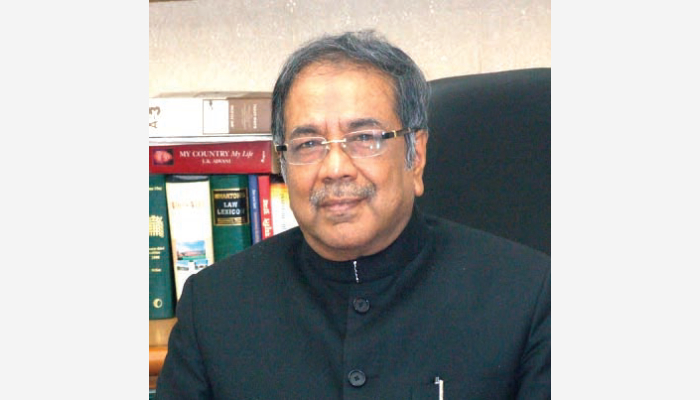
Sir, since you are the author of the Insolvency and Bankruptcy Code 2016, could please tell us why it is such a significant legislation, described by Finance Minister Arun Jaitley as the most important economic reform next to GST since independence?
The Insolvency and Bankruptcy Code 2016 is a comprehensive law which covers the entire subject matter of corporate as well as individual insolvency under a single umbrella eliminating multiple judicial fora and laws each impacting the other not always complimenting the other. The Insolvency and Bankruptcy Code 2016 is a land mark legislation of the third Millennium since the Code will accelerate the flow of credit into the market easing the burden on the public sector banks and enhance our ranking in ease of doing business. Entrepreneurs can raise money from the market and need not depend upon Banks for finance. Our youngsters can explore new business models. We missed to capitalise on the opportunities opened up by the industrial revolution for historical reasons but digital revolution is the creation of our youth. So the Code will be the engine through which India will emerge as a major player in the Global economy by exploiting the vast opportunities offered by the digital revolution. The Finance Minister is right saying that the Insolvency and Bankruptcy Code 2016 is the most important economic reform next to GST since independence.
It is going to be six months when this legislation came into existence. A lot has happened since then and a new insolvency discipline seems to be gaining ground. We have Insolvency and Bankruptcy Board and NCLT constituted. Are you satisfied with the development so far, and, in your opinion, what challenges lies ahead?
I am extremely satisfied with the progress made in bringing the Insolvency and Bankruptcy Code into force. The Oversight Committee which was constituted under the Chairmanship of the Secretary Ministry of Corporate Affairs had within two months has completed all the formalities relating to the framing of rules regulations under the Code, and with the appointment of the Chairperson of the Insolvency and Bankruptcy Board, we can hope to see the provisions of the Code relating to Corporate insolvency in full operation before this year end. As for the challenges, I can only say no law is perfect .Success or failure of a law will depend upon how the judges interpret them. The Code prescribes strict time lines. I hope the Tribunals adhere strictly to the prescribed time limits .Otherwise we may encounter problems in effectively addressing the shortcomings for which the Code was enacted. Even a bad law can be put to good use. As Bentham said “Judge Made law can never be better than the judges who make them”. So we have to focus on capacity building for enhancing the expertise of members of the NCT and DRTs who are going to interpret this Code because the subject matter is emerging, complex and intermingled with market forces.
“I am extremely satisfied with the progress made in bringing the Insolvency and Bankruptcy Code into force. The Oversight Committee which was constituted under the Chairmanship of the Secretary Ministry of Corporate Affairs had within two months has completed all the formalities relating to the framing of rules regulations under the Code, and with the appointment of the Chairperson of the Insolvency and Bankruptcy Board, we can hope to see the provisions of the Code relating to Corporate insolvency in full operation before this year end.”
How do you look at the role of insolvency professional in the new dispensation? What qualifications should they possess and what role the Insolvency and Bankruptcy Board will play in ensuring emergence of talent and good professionals in this field?
He is the most important person around whom revolves the Code. The successful working of the Code will depend upon the expertise of Insolvency Professional. Section 208 outlines the functions and duties of the Insolvency Resolution Professional. Section 29 lays down one of the main functions of the resolution professional— preparation of an information memorandum, which shall enable a resolution applicant to prepare a resolution plan. Such an information memorandum is envisaged to be prepared in order for the market participants (resolution applicants) to provide solutions for resolving the insolvency of the corporate debtor. In individual insolvency, he acts as the Bankruptcy trustee who is in charge of the liquidation estate. Since with the globalisation and emergence of knowledge economy different types of business models are merging rapidly, it is difficult to restrict the expertise necessary to manage to any single discipline or subject. In view thereof, section 207(2) of the Code provides that the Board may specify the categories of professionals or persons possessing such qualifications and experience in the field of finance, law, management, insolvency or such other fields as it deems fit.
“The crux of this issue is that if India were to adopt the Model Law, it would be most useful when dealing with cross border insolvencies that involve countries that have also adopted the Model Law. For countries that have not adopted the Model Law, India would have to rely on bilateral agreements for the coordination/ cooperation principles.”
There is a concern that the cross border insolvency deserved little more attention in the legislation, and that vesting DRT with jurisdiction to deal with personal insolvency would make law inaccessible as there is a huge backlog with DRT and many tribunals are not functioning at present. Will there be any special effort by the government to deal with such issues in the future?
Cross Border Insolvency requires a mature Bankruptcy eco system on par with the other countries like dedicated bankruptcy courts, a robust resolution profession, information utilities and a Regulator to oversee these new players in the market. At present this is lacking in our country. With the enactment of the Code these inadequacies will be addressed and we can address Cross Border insolvency in due course of time. Though Cross border insolvency has not been comprehensively addressed in the Code yet section 234 empowers the Central Government to enter into agreement with foreign countries for enforcing the provisions of the Code and section 235 empowers the insolvency professional or the bankruptcy trustee to make an application to the Adjudicating authority for the issue of a letter of request to a court or authority of such country competent to deal with such request. The UNCITRAL Model Law on Cross Border Insolvency is not based upon a principle of reciprocity between States. There is no condition or requirement that a foreign representative wishing to access facilities under the Model Law must be from a state which has itself enacted the Model Law. Thus, if India were to incorporate the Model Law into the Code, a foreign representative from a state that has not enacted the Model Law could gain access to Indian insolvency proceedings. However, an Indian representative would not similarly gain access to foreign insolvency proceedings in that state under the Model Law, though there may be other provisions in the laws of that state enabling access. The underlying assumption behind not having a reciprocity requirement is that some countries will, in enacting the Model Law without any precondition of reciprocity, set an example for others and, in this way, raise levels of international awareness and cooperation. While most countries have enacted the Model Law without any condition of reciprocity (including the U.S., U.K. Australia, Canada, Mexico, etc.), at least three countries (Romania, Spain and South Africa) have added conditions of reciprocity when incorporating the Model Law into their domestic legislation. The crux of this issue is that if India were to adopt the Model Law, it would be most useful when dealing with cross border insolvencies that involve countries that have also adopted the Model Law. For countries that have not adopted the Model Law, India would have to rely on bi-lateral agreements for the coordination/cooperation principles. As far as the DRTs are concerned it is reliably learnt that the Government has started the process of re-engineering the DRTs with more manpower and also to make them technologically more modern with video conferencing and electronic filing facilities. The recent amendments made to the Recovery of Debts and Bankruptcy Act 1993 addresses many of the misgivings associated with the functioning of the present DRTs. To provide access to litigants at the grass root level section 17(1A)(b) provides that “(b) The Tribunal shall have circuit sittings in all district Head quarters.” These measures will adequately address the shortcomings experienced in the functioning of the DRTs.

First it was Swissleaks, now it is Panama leaks. We cannot speculate what leaks will follow next. According to Ranjeev Dubey, Managing partner, N South law firm, “The Panama Leaks change nothing except perhaps the location of the tax free money.” We have many such locations in the world where black money can be parked. So, no wonder, if tomorrow the Indian Express, the lone paper living up to its words, comes up with leaks with fanciful names such as Bahamas leaks, or Bermuda Leaks, or Tobago Leaks or Cayman Leaks.
“Unless you change the incentives, in India and internationally, nothing will change,” adds Dubey. There are many tax havens in the world which have nil or negligible tax on profits made by foreign companies, very lax rules for setting up companies and very stringent secrecy laws that enable the wealthy to stash their wealth in these niches, hidden from the prying eyes of the taxman.
However, After the Panama Leaks, the Special Investigation Team (SIT) set up by the Supreme Court to trace black money stashed abroad has asked three government agencies to prepare a report on allegations. Retired Supreme Court judge Arijit Pasayat, who is the vice-chairman of the SIT, told media that the reports on 1.5 million documents leaked from the files of Mossack Fonseca need to be “verified” by the Enforcement Directorate, the Income Tax Department and the Directorate of Revenue Intelligence.
The Panama Leaks contain documents which show that Mossack Fonseca, the Panamanian law firm, has set up more than 240,000 offshore companies for clients around the globe. As far as India is concerned, the leaks contain names of 500 Indians, including some prominent figures among them, who have opened shell companies with their help and have accounts in various tax havens. In fact, black money has been a big issue in India for many years now. In the last Lok Sabha elections, the BJP had promised to bring back all black money from abroad if elected to power and promised to deposit 15 lakh to every Indian bank account. However, Amit Shah later clarified that it was a ‘chunavi jumla’ made by them to win elections.
Black money is a universal problem, not just confined to India. The Governments across the globe have been shouting themselves hoarse about tax evasion that is making a large dent in their exchequers, for many years now. The OECD estimates annual losses from tax evasion by the corporates at $100240 billion annually. In India, the Finance Minister Arun jaitley announced after the panama Leaks that there will be no holy cows and that the government will deal with it with tough hand.
In the case of Panama Leaks, the experts point out that there are some points that the government agencies dealing with black money must examine. The most important is the route through which the money was invoicing of imports, exports and other business transactions. Many of these could reveal Foreign Exchange Regulation Act (FERA) and Foreign Exchange Management Act (FEMA) violations. Second, the source and quantum of money that was moved out could be money on which tax has not been paid.
However, one has to look at the legitimacy angle too. The government of India has liberalised its economic policies. it has allowed sending funds abroad under Liberalised Remittance Scheme (LRS). But there is limit on the amount one can transfer and at present it stands at $ 2, 50,000. This scheme was started in 2003, therefore, it is vital for investigating authorities to find out the dates of such transaction and legality and illegality involved with it.
India has been of late trying to put in place a robust mechanism to fight off the menace of black money. It enacted a new law which provided taxpayers the benefit of a compliance window to come clean. The window ended in October last year and Jaitley said recently those who did not take advantage of the compliance window last year to declare illegal assets abroad will have to bear the brunt. The Union Finance minister also stressed that the global initiatives to deal with Black money will be in place by 2017, making it extremely difficult for individuals to hide their assets. However, with this one time compliance window under the Black Money Act, the Government has collected a total of Rs 2,428.4 crore in taxes after over 600 declarations made by stash holders to the IT department. A total of 644 declarations were made under the compliance window
Under this compliance window of the Black Money Act, the government gave immunity from prosecution under FEMA, Prevention of Money Laundering Act and four other laws to persons declaring undisclosed foreign assets under the compliance window of the new Black Money Act. Disclosures made enjoyed immunity from prosecution under the five Acts viz. The Income tax Act, Wealth Tax Act, FEMA, Companies Act and Customs Act. According to this law, the offence of willful attempt to evade tax will also not be an offence under the Prevention of Money Laundering Act (PMLA).
The government, in this year’s Budget, once again came out with a compliance window to encourage domestic black money holders to declare assets in the four-month compliance window. They can pay a total of 45 per cent tax and penalty and come clean. However, this scheme was criticized by Rahul Gandhi as a ‘fair and lovely scheme of the government.” However, many have doubted the utility of such schemes in the long run. In fact, CAG once remarked that the disclosure schemes encourage people to become “habitual tax offenders”, knowing full well that they can hoard money without paying income taxes.
After a PIL filed by senior advocate Ram Jethmalani to bring back India’s black money stashed abroad, the Supreme Court had set up a SIT led by two former apex court judges, Justices M.B. Shah and Arijit Pasayat. The SIT has given many recommendations to the government which will go a long way in curbing the generation of black money, if implemented by the government. However, the government said it would take a view on the SIT suggestions after consulting with the stock market regulator, the Securities and Exchange Board of India (SEBI), the Reserve Bank and other institutions.
Meanwhile, the vice-chairman of SIT, Justice Pasayat, commented late last year that the volume of black money stashed inside India is much more than that kept abroad. “The volume of black money stashed in India is much more than it is now in the foreign countries. If the generation of black money is stopped, its flow to the foreign countries will be substantially reduced,” Pasayat said in a meeting with government officials.
According to Dubey, “The biggest compulsion driving black money generation in India is the financing of elections. Constituencies ask for cash and that must be generated. All this is well known. Unless the electoral costs of each candidate are publicly funded, the compulsion to generate cash will continue.”
“Second, India’s elections are fought for financial benefit. Some take cash up front. This is the smaller piece, but it is still a huge cost for candidates. Others settle for post-victory benefits. This is the bigger piece. It is a system by which groups of political elites collaborate to win elections, acquire power and then convert public assets to private wealth. It’s a business. Thus, vast empires are created. This is universal,” he adds. So, what is the way forward? We have robust laws but the implementation is poor. So what we need is apart from public funding of candidates during elections, rigorous enforcement of existing laws by honest administrative institutions backed up by an efficient judicial system designed to deliver quick and fair results in a predictable timeframe.

The budget 2016 was presented by the Finance Minister amid student unrest and protests all across the university campuses following the suicide of a Dalit student in Hyderabad University and the recent arrest of the student leaders of Jawaharlal Nehru University (JNU) Delhi over the charges of sedition.
The budget 2016-17 was heavily geared towards the rural India. The government tried to address domestic demand and Indian markets. According to Finance Minister, the budget 2016-17 reflected government’s firm commitment to substantially boost investment in agriculture, social sector, and infrastructure, and employment generation on the one hand and simultaneously sticking to the fiscal consolidation path. The growth of GDP was seen at7.6%. Under the FRBM Act, 2003, the government set a fiscal deficit target of 3.5% for the year 2016-17. However, the government proposed reviewing of the working of the FRBM Act by a Committee to review the implementation of the FRBM Act and give its recommendations on the way forward. The government also proposed to give statutory status to Adhar. A new bill for Targeted Delivery of Financial and Other Subsidies, Benefits and Services by using the Aadhar framework was tobe introduced in the current Budget Session of the Parliament.
The budget relaxed FDI norms in some sectors. It allowed FDI in insurance and pension sectors under the automatic route upto 49% and 100% FDI under the automatic route in case of asset reconstruction companies and entities engaged in marketing of food products produced and manufactured in India. FDI limit for individual foreign investors in stock exchanges was increased from 5% to 15%.
For the ease of doing business, the Finance Minister announced that the Companies Act 2013 will be amended. According to FM, amidst all global headwinds, the Indian economy held its ground firmly. However, noting down the challenges going forward, the government highlighted that it must strengthen firewalls against the risk of further global slowdown and turbulence by ensuring macroeconomic stability and prudent fiscal management.
The budget this year was rural centric with the emphasis on rural employment and infrastructure. For rural development as a whole, Rs. 87,765 crore was allocated for 2016-17.The Budget 2016-17 also proposed to amend the Motor Vehicles Act and open up the road transport sector to private players in the passenger segment. The budget proposed two changes in corporate income-tax rates. Addressing businesses, the budget 2016-17 proposed 100% deduction of profits for 3 out of 5 years for startups set up during April 2016 to March 2019. In this budget, Asset Reconstruction Companies (ARCs) were provided a complete pass through of income-tax to securitization trusts including trusts of ARCs. The income will be taxed in the hands of the investors instead of the trust. General Anti Avoidance Rules (GAAR) was expected to be implemented from 1.4.2017. To facilitate investments in Real Estate Investment Trusts, the budget proposed that distribution made out of income of SPV to the REITs and INVITs having specified shareholding will not be subjected to Dividend Distribution Tax.
On income accruing to foreign e-commerce companies from India, the budget proposed that a person making payment to a nonresident, who does not have a permanent establishment, exceeding in aggregate Rs.1 lakh in a year, as consideration for online advertisement, will withhold tax at 6% of gross amount paid, as Equalization levy. The levy will only apply to B2B transactions.

This government, since its inception, has been under the scanner from a ‘growth and development’ perspective. The initial euphoria seems to have given way to ongoing scrutiny. Public aspirations of sudden reform have, over the past two years, put to the test the Modi government generally, and the Jaitley budget specifically. But when a 1.2 billion person ship is in mid ocean, it is bound get hit by choppy waters and waver from its original course. What is essential is the realisation that something is wrong, and gradually manage getting back on track. And in my personal opinion this government, despite unfortunate events like the EPF fiasco, has identified its hiccups and is on its way to course correction. The present budget is certainly a step in the correct direction for many reasons. Through its focus on the rural and agrarian economy, the budget looks at long term stimulation of consumption among the rural populace, which will then, eventually, lead to an expansion of the consumer market generally, and therefore provide a boost to the corporate market. The renewed attention to PPPs is refreshing, and hopefully this time the attraction for the private sector in getting involved would be greater than last time round. This, along with the knowledge that infrastructure is a key point of interest to the government, with INR 55,000 cr. of the total allocation of INR 2,21,246 cr. being earmarked solely for roads, is definitely encouraging news.
The legislative and regulatory proposals outlined in this budget are specifically of interest to me, as they would be to any lawyer, I suppose. This includes the discussion around the bankruptcy code, bond and commodity markets, amendments to the SARFAESI Act, potential implementation of the GAAR, retrospective taxation related amendments and the proposed statute for the Aadhar scheme, among others. The impact that these particular proposals will have on the inflow of foreign investment in real time, however, remains to be seen, and more details would be required to make an informed assessment of foreign investor sentiment.
It can safely be assumed that the government is viewing its fiscal responsibilities in context of the long term as opposed to placing reliance upon immediate gains through increased government borrowing and spending – the fiscal deficit target of 3.5 per cent of the GDP evidences this understanding. This should help increase foreign investment and also aid in preserving the India’s position as a strong economy globally. In a nutshell, this budget seems carefully thought out – one with no frills – but one that continues to strengthen the very foundation of continuous growth and development.

I ntellectual Property Rights is one of the most contentious issues all over the world. India, of late, has been on the path of formulating a new Intellectual Property Rights Policy. In 2014, the new NDA government constituted an IPR think tank to frame a new policy. In April 2015, a comment by Prime Minister Narendra Modi that India needed to bring its patent laws on par with global standards to make India a hub for outsourced creative services was seen by many non-profit organizations as succumbing to US pressure. However, in an interview, trade minister Nirmala Sitharaman in June 2015 year denied any pressure on India on the IPR policy. “On the contrary, in each one of my meetings with the US authorities, I have upfront said we have formed a think-tank, which is forming the IPR policy, every one of the decisions that are being taken is put in the public domain. I myself told the US team, ‘if you are keen to know about our position, please meet up with the think tank’, and they have sent their representative also and have given their views. That’s where it ends,” she had said.
An initial draft of the IPR think-tank was put on its website for comments. Taking note of the leaked final draft, the experts raised concern that that the policy indicates a preference for the Indian government to introduce a range of new measures to enhance enforcement of IPR that go far beyond government obligations under the TRIPS agreement (Trade-Related Aspects of Intellectual Property Rights) of the World Trade Organization. They also said that it may deter generic competition that is critical to ensuring affordable medicines for all.
However, according to the government, the aim of the draft policy was to foster predictability, clarity and transparency in order to augment research, trade, technology transfer and investment.
There are well-established statutory, administrative, and judicial frameworks for safeguarding IPRs in India. India has complied with its obligations under the Agreement on Trade Related Intellectual Property Rights (“TRIPS”) by enacting the necessary statutes and amending the existing statues. The experts point out that international trademarks have been afforded protection in India in the past by the Indian courts despite the fact that these trade marks were not registered in India. They also reveal that the computer databases and software programs have been protected under the copyright laws in India resulting in check on piracy through judicial intervention. The courts, under the doctrine of breach of confidentiality, have protected trade secrets. India is a signatory to the many international conventions such as Berne Convention, Universal Copyright Convention, Paris Convention, Convention on Biological Diversity, Patent Cooperation Treaty, Budapest Treaty on the International Recognition of Microorganisms for the Purposes of Patent Procedure 1977. By virtue of such membership, convention applications for the registration of trademarks, patents, and designs are accepted with the priority date claim,and copyright infringement suits can be instituted in India based on copyright created in the convention countries.
Trade and Merchandise Marks Act, 1958 replaced by the Trade Marks Act, 1999
The Copyright Act, 1957 The Patent Act, 1970, amended by the Amendment Acts of 1999 and 2002 and 2005
The Designs Act of 1911, completely replaced by the Designs Act of 2000.
The Geographical Indications of Goods (Registration and protection) Act, 1999
The Semiconductor Integrated Circuits Layout- Design Act, 2000
The Protection of Plants & Varieties and Farmers Rights Act, 2001
The Biological Diversity Act, 2002
According to experts, India has a highly developed judicial system with the Supreme Court having plenary powers (Article 142) to make any order for doing complete justice in any cause or matter and a mandate in the Constitution (Article 144), to all authorities, Civil and Judicial, in the territory of India to act in aide of the Supreme Court. The scope of Writ Jurisdiction of the High Courts (Article 226) is wide and the judiciary is separate and independent of the executive to ensure impartiality in administration of justice. In the field of intellectual property stringent punishments are prescribed in respect of the offences of infringement.
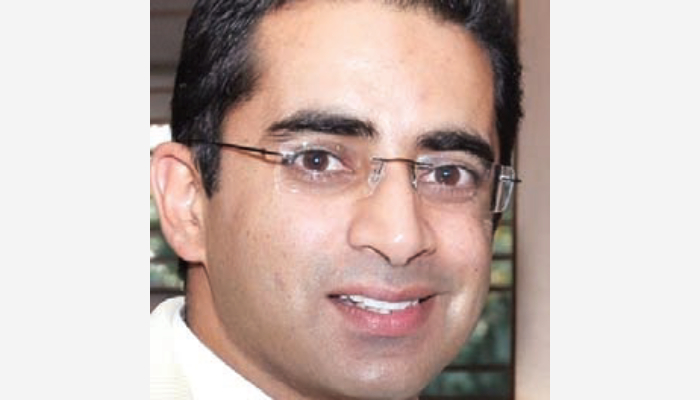
While the aim of India’s IPR Policy may be as claimed by the government to protect concerns of public health, food security and environment and encourage knowledge diffusion, there are genuine concerns about overzealous enforcement and generic competition, in the long run as a country we not only need a good IPR Policy but we also need to develop a culture for appreciation of IPR.
The courts in India, in recent times, have given judgment upholding the rights of the IP owners. Most recently, in November last year, the Delhi High Court held Indian company Cipla guilty of infringing Roche’s anticancer drug patent. Earlier also Courts in India have recognised the rights of the IP owners. In its judgment in Coca-Cola Company Vs. Bisleri International Pvt. Ltd , the Delhi High Court granted an interim injunction against the defendant even when there was a question of jurisdiction and the court held that if the threat of infringement exists, then this court would certainly have jurisdiction to entertain the suit. More recently, in Novartis v. Union of India, the court looked beyond the technicalities and into the attempts of the companies to ‘evergreen’ their patents and making them inaccessible at nominal rates and rejected the patent claims of Novartis, which was not inventive or had a superior efficacy.
A country like India which has a tradition of knowledge sharing, endorses the fact that the IP must be encouraged for the growth of civilsation. India is now a signatory to various IP treaties and conventions which has helped India to enforce IP protection more fiercely. In India, infringement and passing-off actions can be instituted by filing a suit in the appropriate court. All intellectual properties laws state the appropriate court in which such suits can be instituted. After filing the suit, the plaintiffs can seek ad interim and interim relief, including injunctions, Mareva Injunctions, an appointment of the commissioner or the court receiver, Anton Piller orders, John Doe orders, and other orders, such as discovery and inspection, or orders for interrogatories. India has shown that its adjudication of the disputes by the court as well as the ammendment of its law for a more progressive changes, its intellectual property regime has kept pace with the global changes in IPR law and governance.
The LW Bureau is a seasoned mix of legal correspondents, authors and analysts who bring together a very well researched set of articles for your mighty readership. These articles are not necessarily the views of the Bureau itself but prove to be thought provoking and lead to discussions amongst all of us. Have an interesting read through.

Lex Witness Bureau

Lex Witness Bureau

Lex Witness Bureau

For over 10 years, since its inception in 2009 as a monthly, Lex Witness has become India’s most credible platform for the legal luminaries to opine, comment and share their views. more...
Connect Us:


The Grand Masters - A Corporate Counsel Legal Best Practices Summit Series
www.grandmasters.in | 8 Years & Counting
The Real Estate & Construction Legal Summit
www.rcls.in | 8 Years & Counting
The Information Technology Legal Summit
www.itlegalsummit.com | 8 Years & Counting
The Banking & Finance Legal Summit
www.bfls.in | 8 Years & Counting
The Media, Advertising and Entertainment Legal Summit
www.maels.in | 8 Years & Counting
The Pharma Legal & Compliance Summit
www.plcs.co.in | 8 Years & Counting
We at Lex Witness strategically assist firms in reaching out to the relevant audience sets through various knowledge sharing initiatives. Here are some more info decks for you to know us better.
Copyright © 2020 Lex Witness - India's 1st Magazine on Legal & Corporate Affairs Rights of Admission Reserved